April 17, 2020 (Updated March 7th, 2023)
Mind map on industries analysis: reduce business risk
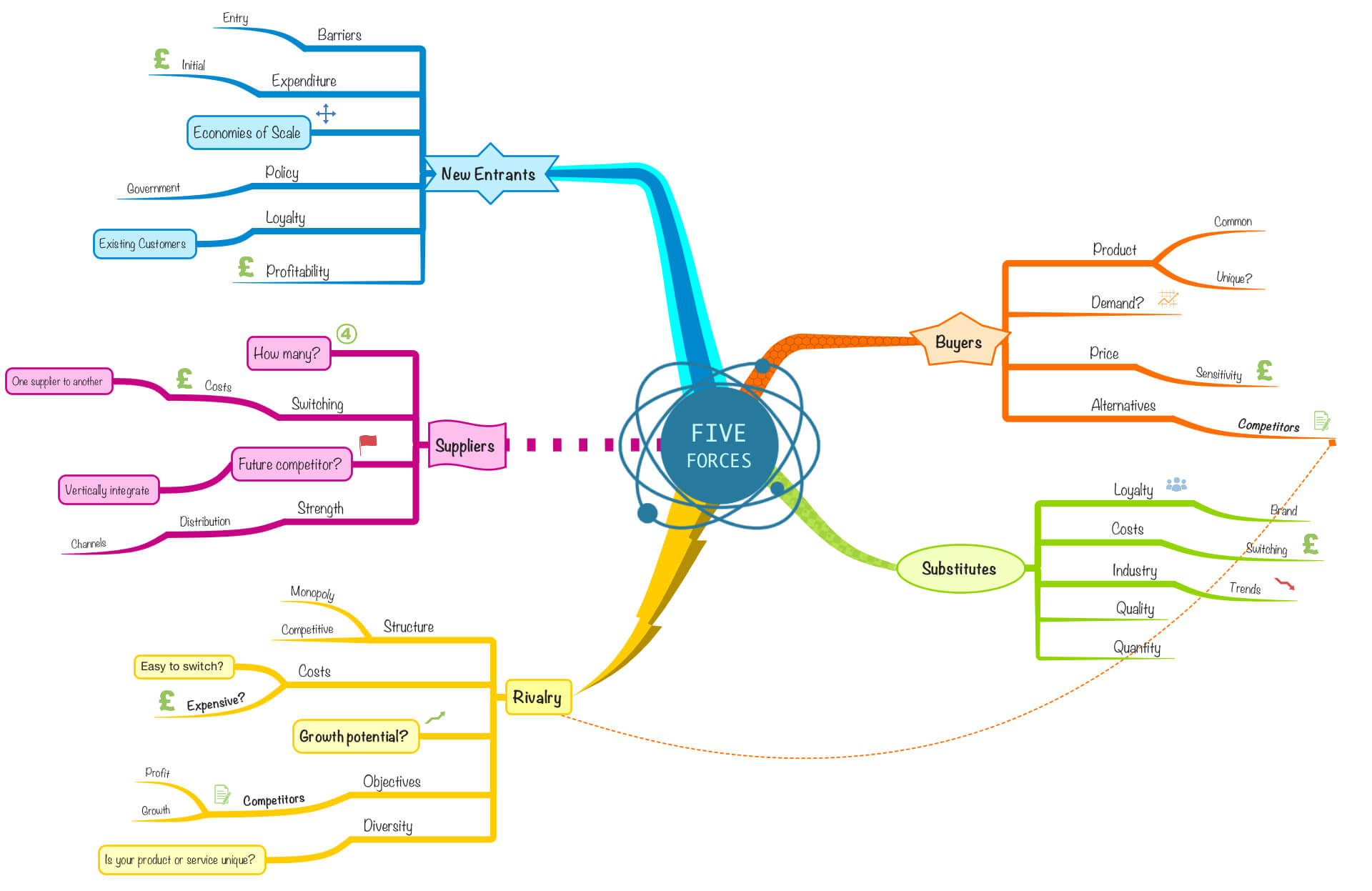
Whether you’re starting a business, launching a new service line, or repositioning your products in the marketplace, you need to determine whether the industry is worth operating in.
It’s important to expose any factors or threats which could hamper your business growth or cause your market value to drop. To help you to make better market predictions and develop more competitive business strategies, visualise your strategic position by creating a mind map on industries: a ‘Five Forces’ industry analysis map.
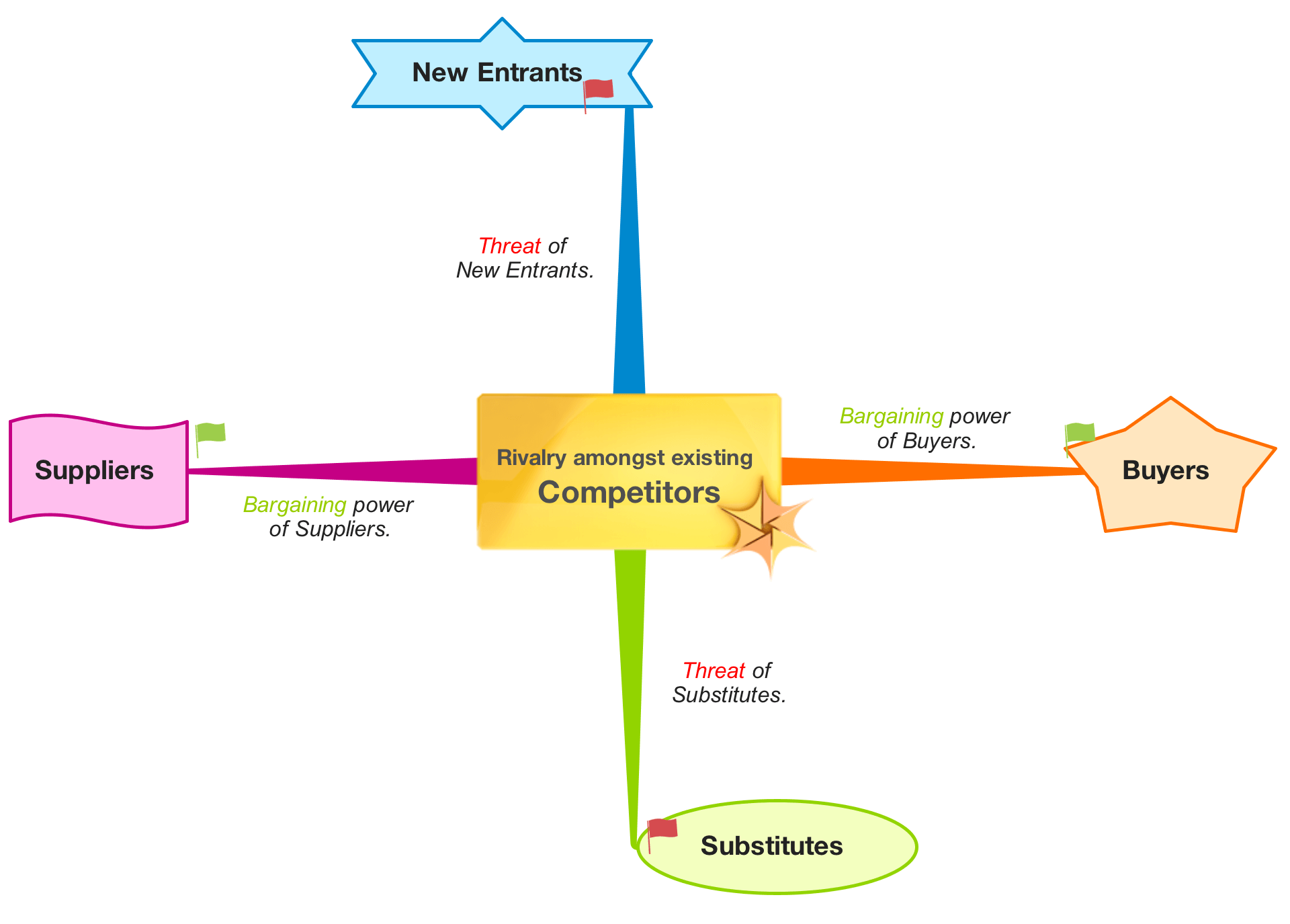
The Five Forces analysis was created by the business strategist, Michael Porter, to assess the profitability of an industry. The tool evaluates five forces, including the bargaining power of suppliers and buyers, competitive rivalry, and the threat of new entrants and substitutes. If you look at Porter’s original model (shown above), it almost looks like a mind map already.
By translating Porter’s model into a mind map, you can explore your ideas on an unlimited workspace without losing focus. mind maps consolidate large amounts of information on one clear and concise canvas, thanks to their radiating structure. Plus, using single keywords per branch helps to trigger associations in your brain, sparking new ideas and encouraging you to thoroughly analyse your industry.
Begin by creating a mind map using the five forces as the main branches radiating from your central idea. Explore each force further by creating child branches related to each of the five elements.
Supplier Power
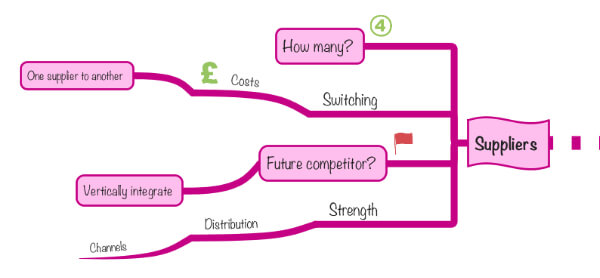
The companies that you purchase from can play a large part in the make-up of your product or service. Depending on their bargaining power and the level of demand, they can dictate the pricing and availability of resources in your industry. In this section of your mind map, you need to determine how easy it is for suppliers to drive up their prices.
Mind mapping provides a clear visual way for you to see exactly where you and your suppliers stand. Create colour coded branches for each supplier, with child branches detailing their costs, locations and distribution channels. You can then compare them to see which offers the best value. Consider factors such as the number of suppliers, the uniqueness of their product or service and switching costs. Use visual flags, such as green crosses and red ticks, to highlight the positives and negatives of each supplier. Colours and images encourage an emotional response and will help you to pinpoint the major differences between your suppliers.
Buyer Power
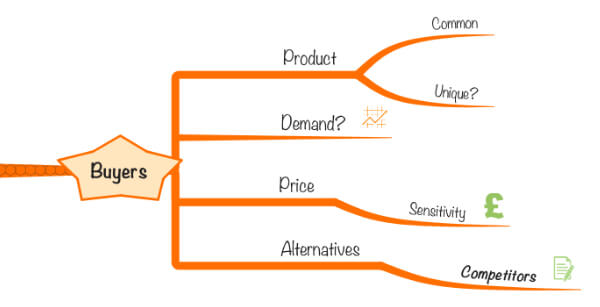
Buyers dictate the level of demand for your product or service. If your buyers have a lot of options to choose from, and there are a few buyers who command a big slice of the market, they can eat into the profits of your industry. Here you need to assess how easy it is for buyers to drive your prices down.
As you did in the first section of your mind map, look at the positives and negatives of your potential buyers. Use colour coded branches to explore the different avenues that the buyer could purchase from, such as a brick-and-mortar shop or online service. Consider factors that will affect the power of your buyers such as the number of buyers in the market, the importance of each individual buyer to your business, and the cost of switching to a competitor, to help you determine where the buyers are most likely to purchase.
Threat of Substitutes
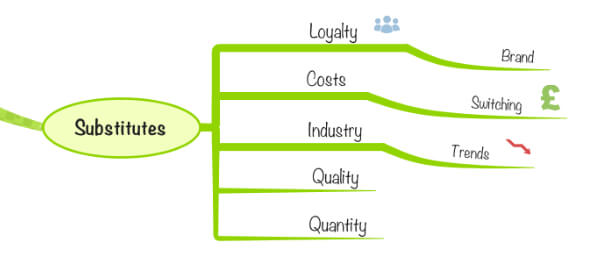
A substitute can refer to any alternative that meets the same need as your product or service. If your products can be easily replaced with an alternative, you will find a problem getting high-profit margins. In this section of your mind map, you need to determine if your product or service is easily imitated.
The unlimited canvas of your mind map will allow you to fully examine the substitutes in your industry. How do they compare to your own product or service? Consider brand loyalty, switching costs, trends and quality. Use child branches to drill down into the strengths and weaknesses of potential alternatives. From this, you will be able to build a clear picture of your position.
The visual overview of a mind map will help you to identify connections and comparisons between substitutes and rivals, as well as the trends and behaviours of the industry. Being able to see the bigger picture allows you to see every competitor at a glance. Plus, it’s extremely useful to uncover gaps and spot potential threats that could easily go undetected using a linear method, keeping you one step ahead.
Threat of New Entry
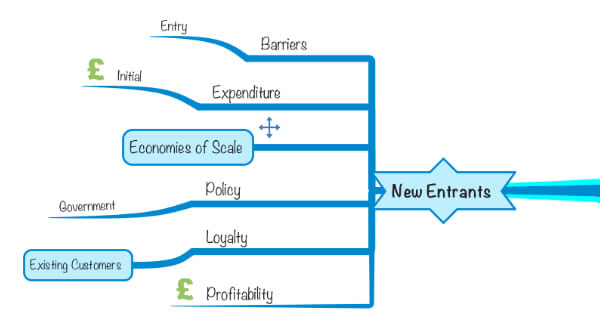
How easy is it for a newcomer to compete with your business? If new entrants move into an industry they will gain market share, the rivalry will intensify and profit margins will plummet. Your position in the market is stronger if there are high barriers to entry.
Now, examine the threat of new entrants in your market. As you did in the previous section of your mind map, create child branches detailing the barriers that will prevent newcomers from entering the market. Think about factors such as investment costs, access to distribution channels, legal restrictions, intellectual property and strong existing brands already competing in an industry that might deter newcomers.
Competitive Rivalry
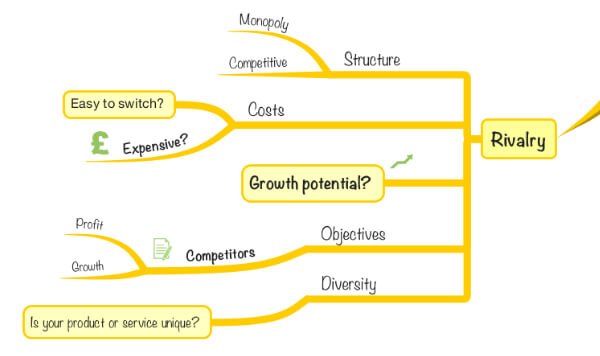
This is the advantage that you have over the competition. In this section of your mind map, the quantity of and capability of your competitors are the focus. If you have many competitors, and they offer equally attractive products and services, then your suppliers and buyers are likely to go elsewhere if they don’t get a good deal from you.
On your mind map, create a branch for each of your main competitors with child branches exploring their strengths and weaknesses, and any opportunities or threats that could arise as a result. What are the objectives of your competitors? Are they driving for huge profit margins or increasing their market share? Why not create a SWOT Analysis mind map to explore each competitor? The radiating structure of a mind map will help your brain to digest all the ideas and information surrounding your competitors and bring them into clear focus. Mind mapping gives your brain a pre-structured framework for association, ensuring that you pay attention to every detail.

Porter’s Five Forces
Translating Porter’s Five Forces industry analysis into a mind map provides you with a strong visual overview. Connections and comparisons can be easily visualised and the radiant structure combined with single keywords per branch encourages a more in-depth analysis. With a clear understanding of the balance of power within your industry, you can take fair advantage of a strong situation, improve a weak situation, draw accurate conclusions and make the most informed strategy decisions possible.
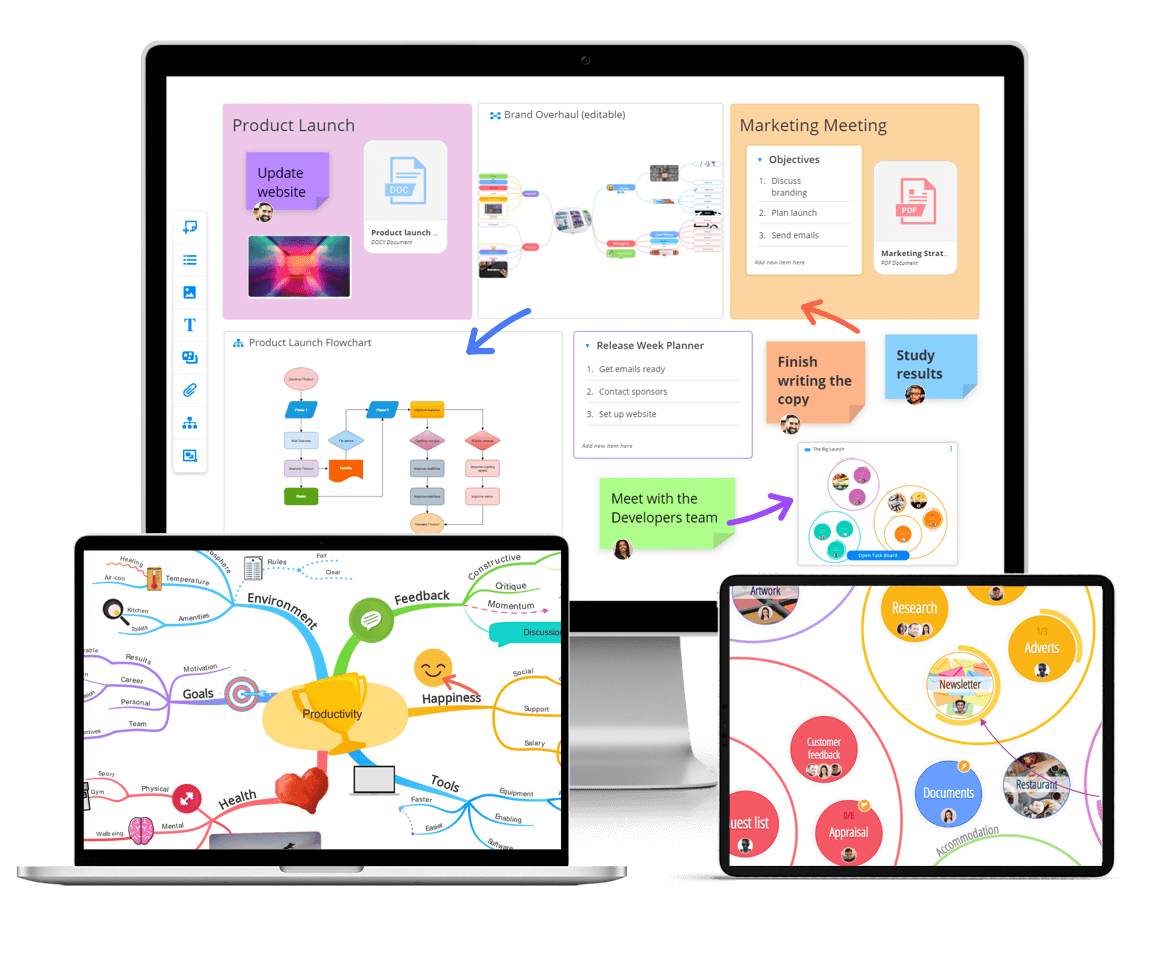
Transform how you work
Ayoa is an all-in-one platform that allows teams to collaborate and create seamlessly while working anywhere in the world. Integrations with Zoom and Google Drive allow you to stay productive and avoid switching between apps.
Try Ayoa